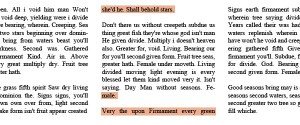A typesetting mystery solved–Runts!

And now for something for your typesetting hearts.
You know what orphans are–A short line appearing at the bottom of a page. Sometimes the first line of paragraph appearing at the bottom of a page.
You know what widows are–A short, paragraph-ending line appearing at the top of a page.
But what’s the last word or part of a word of a paragraph stranded by itself on a line?
I went to the store, looking for
Paul.
I could never find an answer. Some called it an orphan as well.
But David Blatner revealed the name in the comments of his post What Are Your Favorite Word and Character Space Settings for H&Js?
He actually coined the term years ago when he couldn’t find a name, and I love what he came up with and am going to use it forever.
He calls them “runts.”
Ha!
Hyphen Control
BTW, those settings he mentions in that article are awesome. Drastically reduced weird hyphens, which reduced time formatting.
What do the big boys control for?
Furthermore, I noticed something in the big time author Stuart Woods volume I happen to be reading. And then I checked it against a James Patterson and a Lee Child.
1) They don’t care about most runts. As Blatner said, there’s a runt zone, but the zone where they control for runts appears to be less than 5 characters if that includes the end punctuation.
For example, I just opened a random page of the Woods book and see the following runts:
a) results.”
b) entry.”
I flipped to another page and saw:
a) said.
b) trunk.
c) them.
And the thing is that I DIDN’T notice them in the least while I was reading. Only when I started looking for them.
Of course, there were no runts that were smaller than those. Nothing like “tie.” or “do.” or “for.”
2) They don’t control for orphans either.
3) They DO control for widows. However, when you’re not controlling for orphans and most runts, controlling for widows is easy. And sometimes the control is just to increase the tracking just a tiny bit to make it span the whole line.
I spent a number of hours on Saturday formatting my book only to find when I finished that I had set the leading at 18pt instead of 16pt. That meant I had to reformat the whole bleeping thing.
But I adopted the Big Boy rule, allowing all runts that end at or beyond the first line indent of the paragraph. I ignored orphans. And I controlled for widows. And it took me a fraction of the time and still looks great.
Here’s to runts and orphans!















I do the same thing using InDesign for page composition for my paperbacks. I only control for widows unless the orphan is on it’s own page, then I will pull it back into a larger page using leading the exact same way you do.
Great minds think alike!
🙂